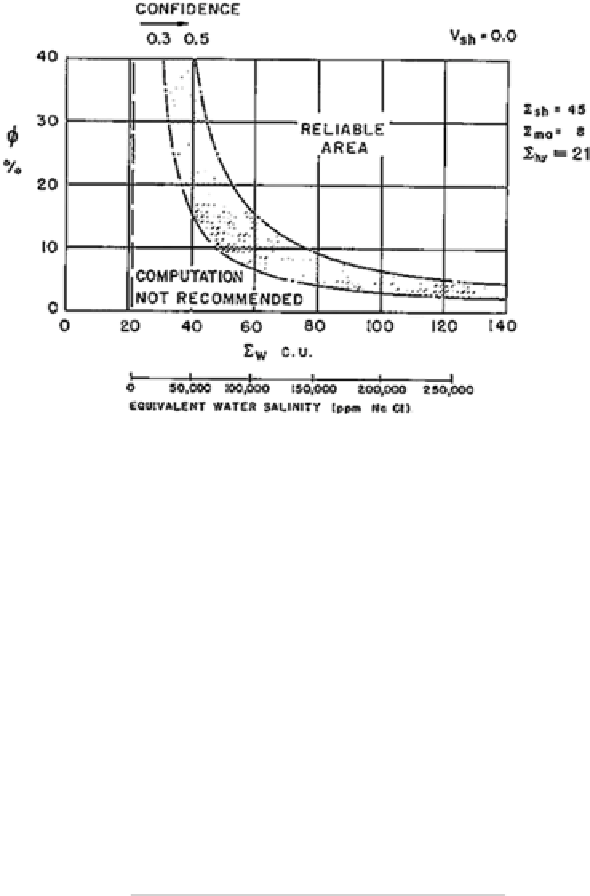Environmental Engineering Reference
In-Depth Information
Fig. 11.22
Reliability of
S
w
Calculation in clean formations. Courtesy Schlumberger
Question #11.4
Color the “reliable” area of Fig.
11.22
with a yellow highlighter
Do the conditions in your district fall in the “reliable” area?
Shaly Formations
The addition of shale to the formation can be handled in the same linear fashion as
before. That is:
(
)
+
(
)
SS fS Sf Sf
Log
=× -
1
V
-
V
+
S
+
1
-
S
ma
sh
sh h
w
w
hy
w
which gives:
(
)
-
(
)
-
(
)
SSfS S
-
-
V
S
-
S
log a
hy a
sh
sh a
S
=
(
)
w
fS S
-
w
hy
Figure
11.23
illustrates the shaly formation. Note that the solution for
S
w
requires
a value for
˕
. In most practical cases, the porosity device used will also be affected
by the presence of shale. For example, if a CNL is used as the porosity device, its
reading will have to be corrected using:
ff f
=-×
NV N
sh
sh
,
where
˕N
is the log reading,
V
sh
is the shale volume % (from GR, etc.), and
˕N
sh
is
the response of the CNL in 100 % shale.

Search WWH ::

Custom Search